The Six-Book Series
About the Series
There Are No Mountains on the Way Back Home
The six-book expanded series There Are No Mountains on the Way Back Home offers an in-depth and transformative exploration of the ten yogic principles, crafted for readers who are ready to delve deeper into the journey of healing and personal growth. This series bridges the wisdom of Eastern spirituality, Western psychology, and modern medical science, presenting a comprehensive framework for holistic wellbeing.
Structured according to the Buddhist model, the series follows three clear stages:
- Diagnosis: Identifying the root causes of suffering and imbalance.
- Prognosis: Determining whether healing and liberation are possible.
- Remedy: Providing practical steps and transformative principles for recovery and renewal.
This method takes readers step-by-step through confronting suffering, understanding its origins, and adopting life-changing principles to achieve liberation and healing. It views cancer not just as a physical illness but as a profound, life-altering event requiring a significant shift in perspective and lifestyle to fully embrace the path to recovery and renewal.
The series blends profound insights with practical guidance, weaving thoughtful advice with relatable examples and even moments of humor. Engaging animations and accessible storytelling keep the content lively and approachable, knowing that readers experiencing cancer and their loved ones need connection and encouragement as much as information.
Whether you are experiencing cancer, caring for someone who is, or supporting as a family member or professional working with individuals affected by cancer, this series equips you with the tools to navigate the challenges of cancer, transforming them into opportunities for growth, resilience, and lasting healing.

Click the book cover below to see What's inside the book
Book1: Call for Change
This introductory book sets the stage for transformation, addressing the spiritual and psychological need for a profound shift in perspective. It presents cancer not merely as a physical illness but as a powerful call for change – an opportunity to reassess priorities, confront imbalances, and embrace healing on all levels. The book’s insights align with the Diagnosis phase of the Buddhist model, encouraging readers to explore the root causes of suffering while preparing them for deeper self-discovery in the books to come.
This volume covers key topics essential to initiating the journey:
- Diagnosis of Suffering: Examining cancer as a wake-up call and a symptom of deeper emotional, physical, and spiritual imbalances. Readers are guided to view their challenges as signals to address underlying issues and make transformative changes.
- Clarification and Intention: Offering clarity about the purpose of this series and emphasizing the importance of self-awareness and intention in the healing journey. Through relatable stories and practical exercises, this chapter helps readers set the foundation for meaningful growth.
- Navigating the Current Chapter: Guiding readers to assess their current state – emotionally, physically, and spiritually – while identifying areas for growth. This chapter uses examples, reflective questions, and gentle encouragement to empower readers to take the first steps toward change.
With relatable examples, engaging stories, and practical advice, this book helps readers begin their journey with a sense of purpose and possibility. It provides a compassionate framework for understanding suffering, fostering self-awareness, and preparing for the deeper exploration of ego and true knowledge in Book 2. By the end of this volume, readers will feel ready to embrace the path to healing with clarity and confidence.
Book2: The Ego and True Knowledge
This book delves into the intricate relationship between the ego and suffering, offering readers a deeper understanding of how the mind influences wellbeing and how transformation is possible through self-awareness. Building on the foundation established in Book 1, it introduces key Eastern philosophies and the concept of liberation as a realistic and attainable goal.
This volume covers essential topics for the journey:
- Understanding the Ego: Analyzing the ego’s profound impact on wellbeing, this section reveals how it creates emotional and physical suffering. Through relatable examples and accessible insights, readers are guided to identify the ego’s patterns and influence in their own lives, setting the stage for meaningful change.
- Vidya (True Knowledge): Introducing self-awareness and wisdom as tools for liberation, this chapter explores how developing insight into one’s thoughts and behaviors can dissolve the illusions created by the ego. Readers are shown practical ways to cultivate clarity and embrace their authentic selves.
- Prognosis of Liberation: This chapter shows that overcoming suffering and finding balance isn’t just a lofty idea – it’s a practical goal within reach. With consistent effort and self-reflection, readers are guided to see how real change and healing are possible.
As the Prognosis phase of the Buddhist model, this book prepares readers for the application of the ten yogic principles introduced in Book 3. By providing a bridge between understanding suffering and embracing tools for change, it equips readers with the knowledge and confidence to take the next steps in their healing journey.
Book3: Foundation of the Ten Yogic Principles
Focusing on the physical foundation of wellbeing, this book introduces the first three yogic principles that set the stage for lasting health and stability. It provides practical tools and relatable examples to help readers establish habits that nurture both body and mind, creating a strong base for the emotional and spiritual growth explored in Book 4.
This volume focuses on three key principles:
- Regularity, Moderation, and Balance: Discover how steady routines and a balanced approach to daily life can promote stability and resilience. Readers are guided to incorporate simple, achievable practices into their lives, fostering health and harmony without feeling overwhelmed.
- A Nourishing Diet: Learn the essential role of wholesome, nutrient-dense foods in supporting physical vitality and emotional wellbeing. This chapter offers straightforward tips and relatable guidance to make food a reliable source of energy and healing.
- Exercise and Conscious Breathing: Explore how physical activity and mindful breathing invigorate the body, calm the mind, and activate natural healing processes. Practical exercises and clear examples help readers integrate movement and breathwork into their routines with ease.
With relatable stories, clear advice, and a friendly tone, this book empowers readers to take meaningful steps toward a healthier and more balanced life. By the end of this volume, they will have established a solid physical foundation, feeling ready and confident to delve deeper into emotional and spiritual wellbeing in the next phase of their journey. This crucial groundwork ensures they are ready to embark on the deeper journey outlined in Book 4.
Book4: Emotional and Spiritual Growth
This book takes readers deeper into the journey of healing, focusing on principles that cultivate emotional resilience and spiritual development. It builds on the physical foundation established in earlier volumes and introduces transformative practices to foster inner growth and harmony. By addressing the emotional and spiritual dimensions of wellbeing, this book equips readers with tools to navigate life’s challenges with grace and strength, blending both yogic techniques and Western approaches.
This volume explores four key principles:
- Relaxation: Discover why intentional relaxation is essential for healing and stress management. Through relatable examples, practical yogic techniques, and Western methods, readers learn how to embrace relaxation as a daily practice to calm the mind, support recovery, and enhance overall health.
- Alignment with Nature: Encouraging readers to reconnect with natural rhythms, both in the external environment and within their true nature as understood in Eastern and Western philosophy, this chapter highlights the profound impact of spending time in nature and aligning with its cycles. Through simple, actionable steps inspired by yogic philosophy and Western practices, readers are guided to find harmony both within themselves and in their environment.
- Self-Observation and Analysis: Offering tools for introspection, this chapter shows readers how to transform the ego from a source of suffering into a pathway for growth. With clear guidance, relatable insights, and practical methods from both Eastern and Western traditions, it empowers readers to observe their thoughts and behaviors, fostering self-awareness and positive change.
- Chapter 9 ¾: King’s Cross Station: This “hidden” chapter, inspired by quantum mechanics and spiritual philosophy, is the treasure of the six-book series and does not appear in the three-book series. It offers a profound exploration of advanced concepts that elevate the understanding of healing and reality.
It delves into:
- Vibrational Frequencies: Examining Einstein’s insight that “Everything in life is vibration” and its relevance to understanding health, disease, and wellbeing.
- Energy Dynamics: Exploring the flow of kinetic and potential energy within the body, mind, and environment, and their impact on healing processes.
- Interconnectedness: Highlighting how individuals and their environments influence each other through wave interference, either empowering (constructive) or weakening (destructive) interactions.
- Quantum Mechanics in Healing: Introducing the double-slit experiment as a metaphor for perception, reality, and the role of focused intention in recovery.
- Internal vs. External Reality: Encouraging readers to shift focus from external symptoms to internal transformations as the true starting point for healing.
- The Role of Consciousness: Investigating how conscious thought and intention can influence physical reality, drawing connections between ancient spiritual wisdom and modern science.
- Spiritual Faith and Healing: Exploring how embracing faith or spirituality can provide a supportive framework for emotional and physical recovery.
- Practical Visualization Techniques: Offering guidance on effective visualization practices that align with the healing process, helping readers focus their energy positively.
These topics are just examples of the rich and expansive content found in this chapter. Chapter 9 ¾ weaves together insights from quantum physics, spirituality, and practical experience, offering knowledge that can profoundly influence one’s approach to the healing journey.
In addition to these principles, Book 4 continues the Remedy phase of the Buddhist model, bridging emotional and spiritual growth and paving the way for the practical applications in Book 5. Through engaging stories, practical exercises, and a grounded, approachable style, this book ensures that readers feel supported and inspired to deepen their understanding of themselves and the world around them. By the end of this volume, readers will be ready to integrate these insights into their daily lives, advancing their journey toward balance, healing, and wellbeing.
Book5: Cultivating Positivity
This book delves into the mental and emotional aspects of healing, offering readers practical tools and insights to foster a mindset and environment that support resilience and growth. By blending yogic techniques with Western psychological approaches, it highlights the power of positivity in creating a strong foundation for lasting wellbeing.
This volume explores two key principles:
- Positive Thinking and Neuroplasticity: Helping readers rewire thought patterns and embrace a more constructive mindset, this chapter shows how positivity can bolster emotional resilience and growth. Practical examples and exercises draw from both yogic traditions and Western neuroscience, making it easy to adopt strategies that cultivate a positive outlook.
- Creating a Positive Environment: Empowering readers to design surroundings that nurture and support their healing journey. This chapter integrates wisdom from yoga and Western environmental psychology, demonstrating how external settings and relationships can deeply influence inner wellbeing.
By addressing these critical areas, this book lays the groundwork for the final phase of introspection and spiritual fulfillment in Book 6, equipping readers with the tools to bring positivity into every corner of their lives.
Book6: Meaning and Meditation
The final book in the series brings together all ten yogic principles, integrating them into a cohesive framework for healing, self-actualization, and lasting transformation. Designed to inspire profound personal change, this volume reflects on the journey so far and offers powerful tools to deepen physical, emotional, and spiritual wellbeing.
This book explores three essential topics:
- Discovering Meaning: Guiding readers to uncover the deeper motivations behind their healing journey and embrace life’s purpose. Through heartfelt examples and reflective exercises, this chapter helps readers find fulfillment and clarity, turning even the most challenging moments into opportunities for personal growth and renewal.
- Meditation for Growth: Offering advanced techniques to achieve inner peace, spiritual connection, and emotional balance. By blending yogic traditions with Western mindfulness practices, this chapter provides simple, actionable steps to make meditation a practical and transformative part of daily life.
- Holistic Integration: Bringing all ten principles together into a unified approach to wellbeing, this chapter emphasizes creating a sustainable, balanced life. Readers will learn how to connect the physical, emotional, and spiritual dimensions of healing, ensuring these practices become a natural part of their everyday routines for lasting health and happiness.
This concluding book not only completes the six-book series but also serves as a powerful invitation to embrace meaningful, life-changing transformations. It encourages readers to fully integrate these principles, viewing cancer as more than a challenge – it becomes a catalyst for growth, courage, and deep introspection. By the end of this volume, readers will feel empowered to carry the teachings of the series into their lives, creating a strong foundation for ongoing healing, resilience, and personal fulfillment.


